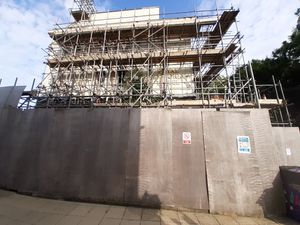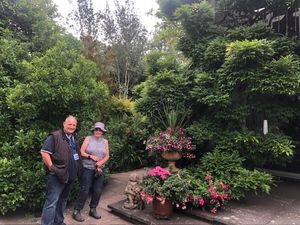One year on and rescued Dornier is taking shape at RAF Cosford
[gallery] Slowly but surely, the last surviving German Dornier bomber is being returned to its former glory at RAF Cosford.
Exactly a year ago today, the wreckage of the World War Two aircraft was being hauled from the depths of the English Channel.
Since then it has been lovingly worked on by expert staff at Cosford, who have tackled it inch by inch.
The aircraft lies in giant polytunnels at the Shropshire airbase and is constantly sprayed in a citric acid based solution to combat the damage caused by spending decades on the seabed.
Aircraft technician John Warburton is among those who clambers aboard the plane, using plastic tools to scrape away debris from the frame.
Darren Priday, conservation centre manager at RAF Museum Cosford admitte dit had been a "challenging year".
He added: "It is a tedious process, but we have learned a lot and are starting to see results."
Visitors to RAF Cosford can watch the conservation work taking place.
Once the plane is back to its former glory, it will form a centrepiece at the Cosford's sister museum at Hendon in London.
The wreckage will remain in the tunnels for several years while staff spray it with a citric acid-based solution to combat the damage caused by spending decades on the seabed.
A team of apprentices at the museum has also removed some of the sea growth from the metal using plastic scrapers.
The conservation work will take years to complete – bosses still don't know exactly when it will be finished – but once done, the plane will be transported to the RAF Museum in London to go on display.
Bosses say they have managed to complete a "significant amount of work" on the frame of the plane.
The forward fuselage has been de-riveted and separated from the tail boom, which suffered major damage on the seabed.
Being able to separate the two sections has allowed the conservation team to focus effort on the interior of the forward fuselage and work on this area is said to be progressing well.
The spraying process has also proved effective on propellers and both units which will shortly be placed on purpose-built stands in readiness for the next stage of their conservation.
However, much like the rescue effort, the conservation project hasn't been without its difficulties.
The hydration tunnels, which are used to spray the parts of the plane, require daily maintenance in order to keep the spraying system operational. And during the early phases of the project, parts of the marine life that had been broken down by the citric acid sprayed onto the plane began to clog up the filter system.
The gel produced by the debris also caused difficulties with the filtration system. As a result of this, the museum upgraded the filtration system. This also improved the museum's ability to keep the system operating at all times.
Staff have also enlisted the help of a professor from Imperial College London to offer guidance.
Professor Mary Ryan has been on hand at each stage of the conservation process.
Visitors have been able to see the Dornier and watch the process through viewing panels in the tunnels. For those wishing to gain closer access to the aircraft, volunteers from the museum's aerospace museum society are working on Dornier components every Tuesday and Thursday from 10.30am to 3pm in the test flight hangar.





